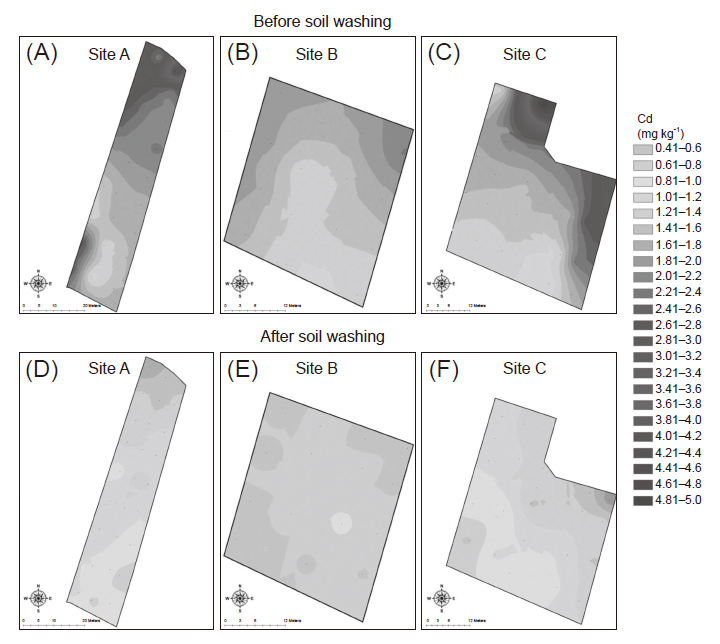All issues

Author:Chien-Hui Syu*, Yu-Wen Lin, Chia-Yi Cheng, Ya-Ting Ho, Chu-Chung Chen, Tsang-Sen Liu, and Horng-Yuh Guo
Abstract:
Cadmium (Cd) polluted in paddy field is the serious problem, and rice consumption is the major exposure pathway for Cd in many Asia area, thereby reducing Cd uptake by rice from soils is very important for lowering the exposure risk of Cd to human. Soil washing is recognized as a high efficient remedial technology for Cd removal. However, limited information is available for assessing the Cd removal and crop growth after on-site soil washing. Therefore, the objective of this study is to evaluate the effects of on-site soil washing with ferric chloride (FeCl3) on the Cd removal, soil properties, and rice growth in paddy fields. Three Cd-containing paddy fields were selected for this study (Cd concentration in soil of fields A, B, and C are 2.13, 1.58, and 1.90 mg kg-1, respectively), which located in Houli Dist., Taichung City, Taiwan. The Cd concentrations and soil properties were measured before and after soil washing, and the soil samples were collected by grid sampling method. In addition, it also measured the growth indices and Cd concentrations in plant tissues of paddy rice grown in tested field after soil washing. The results indicated that the average Cd concentrations in soils of three tested fields were significant decreased after soil washing with FeCl3, and the extents of decrease in Cd concentrations of tested fields were 36.8, 46.3, and 61.0%, respectively. It observed that the pH, electrical conductivity (EC) and available phosphorus (P) of soils were changed after soil washing, but there were no significant differences in total nitrogen (N), organic carbon (C), and cation exchange capacity (CEC) of soils between before and after soil washing. From the results of rice growth, compared with control treatment, it indicated that there was no significant decrease in shoot height, shoot biomass and grain yield of paddy rice grown in soils after soil washing. It also found that the concentration of Cd accumulated in rice plants were reduced. In conclusion, the results of this study indicated that the on-site soil washing with FeCl3 could reduce the Cd concentration in soils effectively, and it has no significant effect on the plant growth and grain yield of paddy rice. In spite of the soil washing had slightly effect on the soil properties, it could be restored through lime and fertilizer supplied. Therefore, it suggests that the on-site soil washing with FeCl3 may be a feasible remedial technology for Cd removal in Cd-contaminated paddy soils.
Key words:Cadmium, Soil washing, Ferric chloride, Paddy rice, On-site trial
Download:![]() PDF Links
PDF Links
- 1. Development of Tractor-Mounted Seedling Transplanter for Sweet Potato
- 2. Synergistic Effect of Additional Gas on the Toxicity of Phosphine to Sitophilus oryzae and Sitophilus zeamais (Coleoptera: Dryophthoridae)
- 3. Effects of Temperature and Solar Radiation on Growth Traits and Plant Elements in Purple Leafy Sweet Potato
 Submit your manuscript
Submit your manuscript
 Guide for authors
Guide for authors